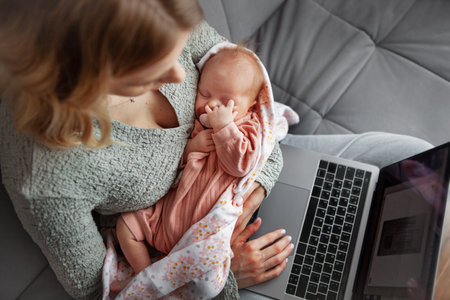Understanding the British Weather: Dressing Your Baby for Every Season
If you’re a parent in Britain, you’ll know that the weather can be famously unpredictable. One minute it’s sunny, the next it’s drizzling or blustery! This makes choosing baby clothes a real adventure, but also an opportunity to be clever and cost-effective. Understanding how the UK’s seasons affect your little one’s wardrobe is the first step in saving money on baby clothes and ensuring your child is comfortable all year round.
In the UK, spring often brings mild temperatures with sudden rain showers. Summer may offer some warmth, but it rarely gets scorching hot, and you’ll still need layers for those cool evenings or unexpected breezes. Autumn can be quite damp and chilly, while winter demands cosy outfits to protect against wind and occasional frost. With these changes in mind, British parents quickly learn that versatility is key when shopping for baby clothes!
Choosing adaptable clothing—like layering pieces, waterproofs, and breathable fabrics—means you can easily adjust your baby’s outfit as the weather shifts. Investing in practical, season-spanning essentials not only keeps your little one snug and dry but also helps you avoid buying unnecessary items. Throughout this guide, we’ll share tips on building a flexible baby wardrobe tailored for Britain’s ever-changing weather—so you can dress your baby comfortably without overspending.
Essential Baby Clothing for All Weathers
When it comes to dressing your little one for the British climate, having the right clothing essentials is key. The weather here can be famously unpredictable, so parents need to be prepared for everything from sudden downpours to chilly winds and the occasional burst of sunshine. To help you save money while ensuring your baby is comfortable year-round, here’s a practical checklist of must-have items for British babies:
All-Weather Baby Clothing Checklist
| Clothing Item | Why It’s Essential |
|---|---|
| Waterproof All-in-One Suit | Keeps baby dry during rainy walks in the park or nursery run—an absolute staple in the UK. |
| Cotton Bodysuits (Short & Long Sleeve) | Great for layering, soft on sensitive skin, and easy to wash. |
| Cosy Fleece or Knitted Jumpers | Adds warmth when temperatures drop, perfect for brisk mornings and evenings. |
| Lightweight Jacket or Windbreaker | Ideal for breezy days; can be layered over jumpers when needed. |
| Wellies (Wellington Boots) | Perfect for puddle jumping and muddy adventures—practically a rite of passage for British toddlers! |
| Cotton Hats and Sun Hats | A must for protecting delicate heads from both chill winds and unexpected sun. |
| Mittens and Booties | Keep tiny hands and feet warm during colder months. |
Top Tips for Getting the Most Out of Each Item
- Choose neutral colours so they’re easy to mix and match or hand down to siblings.
- Look out for adjustable features like cuffs or poppers that allow room to grow.
- Select easy-care fabrics that stand up to frequent washing and British mud!
Parent-Child Activity Suggestion:
Turn sorting through baby clothes into a fun activity—invite your little one to help pick out their favourite jumper or wellies before heading outdoors. This not only encourages independence but also teaches them about dressing appropriately for different kinds of weather—a valuable life skill in Britain!

3. Where to Shop: High Street vs. Charity Shops
When it comes to shopping for baby clothes in Britain, parents have plenty of options, each with its own benefits and unique finds. Let’s take a closer look at two popular choices: high street stores and charity shops, and how they can help you save money while dressing your little one for all seasons.
High Street Shops: Reliable Favourites
High street retailers like M&S, John Lewis, Next, and Primark are staples in British towns and cities. These shops offer a range of baby clothes suitable for the ever-changing UK weather—think raincoats, warm jumpers, summer hats, and everything in between. Many high street stores run seasonal sales or multi-buy deals that savvy parents can take advantage of, especially at the end of each season when prices drop significantly. Shopping here means you get new items with up-to-date safety standards and the convenience of returning or exchanging sizes if your little one has a sudden growth spurt.
Charity Shops: Second-Hand Treasures
If you’re keen on both saving money and supporting good causes, British charity shops are an absolute goldmine for affordable baby clothes. Shops like Oxfam, Barnardo’s, and local hospice stores stock gently-used baby clothing at a fraction of the original price. You’ll often find nearly-new items from popular brands or even designer labels tucked among the rails. Not only do you save money, but you also help reduce waste by giving clothes a second life—perfect for fast-growing babies who often outgrow outfits after just a few wears.
Top Tips for Finding Bargains
- Check high street shops during sale periods or use loyalty cards for extra discounts.
- Visit charity shops regularly as stock changes quickly—early mornings usually have the best picks!
- Don’t forget about online platforms such as Vinted or Facebook Marketplace for second-hand bargains delivered to your door.
A Fun Family Activity
Why not make shopping a family outing? Involve your child in choosing colours or patterns they like at either shop type—it’s a great way to teach them about budgeting and making sustainable choices from an early age!
4. Sizing Up and Smart Shopping Strategies
When it comes to dressing your little one for the ever-changing British weather, getting the right size and shopping smart can make all the difference for your wallet. Let’s explore some practical tips to ensure you’re not only saving money but also keeping your baby comfy through every season.
Choosing the Right Sizes
Babies grow at lightning speed, so it’s tempting to buy clothes that fit just right now. However, opting for slightly larger sizes allows your child to wear each piece longer—perfect for stretching your budget! Here’s a handy guide to help you decide:
| Age (months) | Typical Size | Best For | Top Tip |
|---|---|---|---|
| 0-3 | Newborn/Up to 3 months | First outfits & gifts | Avoid overbuying; babies outgrow quickly! |
| 3-6 | 3-6 months | Layering for unpredictable weather | Choose vests and sleepsuits with room to grow |
| 6-12 | 6-9 or 9-12 months | Crawling & first adventures outdoors | Look for adjustable features like roll-up sleeves or elastic waists |
| 12+ | 12-18 months+ | Toddlers on the move in any weather | Select outerwear one size up for layering over jumpers in winter |
Shopping Seasonal Sales Like a Pro
The UK high street and online shops offer brilliant sales after each season—think end-of-summer clearance or post-Christmas deals. To get the best value:
- Plan ahead: Buy next year’s waterproofs or warm layers during off-season sales.
- Mix and match: Stick with neutral colours or classic patterns so items can be easily reused with new additions.
- Loyalty programmes: Join store clubs like Boots Parenting Club or supermarket Baby Events for early access and extra discounts.
Bargain-Hunting Checklist for British Parents:
- Create a list: Note what you truly need before hitting the shops or browsing online.
- Set reminders: Mark major sale periods on your calendar—Black Friday, Boxing Day, and summer clearance are key!
- Check local groups: Facebook Marketplace, NCT Nearly New Sales, and charity shops are treasure troves for nearly-new quality gear.
- Diversify sources: Don’t forget supermarkets like Sainsbury’s TU Clothing or George at ASDA—they often have surprisingly good value, especially during special baby events.
A Little Forward Planning Goes a Long Way!
If you spot a bargain on an all-weather jacket or cosy knit, think about sizing up so it’ll last through another chilly British spring. By combining these strategies, you’ll keep your baby snug and dry—without breaking the bank!
5. Sharing, Swapping, and Passing Down
One of the best ways to save money on baby clothes in Britain is by embracing the power of community. Instead of buying everything brand new, why not join in with local parents who are already swapping, sharing, and passing down outgrown all-weather gear? Across the UK, many families take advantage of baby clothing swaps—organised events where you can bring gently used clothes your child has outgrown and exchange them for items in the size you need. These swaps often pop up at community centres, church halls, or through parent-led playgroups.
If organised events aren’t your thing, look out for local Facebook groups or WhatsApp chats dedicated to parents in your area. These online communities are goldmines for hand-me-downs and second-hand finds. Many parents are more than happy to pass along waterproof jackets or wellies that have only been worn a handful of times before their little ones had a growth spurt.
Don’t forget the classic British tradition of handing down clothes within extended families and among close friends. It’s not only budget-friendly but also a lovely way to see favourite raincoats or fleeces get a second (or third!) life. By getting involved in these creative community solutions, you’ll not only keep your baby snug whatever the weather but also help reduce waste and build stronger local connections.
6. Getting Creative: Personalising and Upcycling Baby Gear
Who says saving money on baby clothes can’t be fun and imaginative? In Britain, where the weather is famously unpredictable, giving older outfits a new lease of life is not only budget-friendly but also a brilliant way to spend quality time with your little one. Here are some interactive and engaging ideas to refresh baby clothes together:
DIY Decorations: A Family Craft Afternoon
Gather some fabric pens, iron-on patches (Union Jacks or rainy clouds for a British twist!), or even safe fabric paints. Let your child help you create colourful designs on plain vests, jumpers, or raincoats. Handprints, funny faces, or their favourite animal can transform an ordinary item into a cherished keepsake.
Patchwork and Repairs: Learning Together
Don’t toss those trousers with a tiny hole! Instead, teach your child about sustainability by showing them how to mend clothes. Use bright patches or quirky buttons—perhaps shaped like teapots or stars—to cover worn spots. It’s a lovely way to bond while instilling values of reusing and repairing.
Swapping and Sharing: Building Community Spirit
If you’re part of a local playgroup or parent network, organise a “clothes swap” event. Encourage children to pick out ‘new’ pre-loved items and even personalise them on the day with badges or ribbon trims. It’s both eco-friendly and community-building—a true British tradition!
Weatherproof Wonders: Customising for Every Season
Add reflective strips to jackets for those gloomy winter afternoons, sew on extra pockets for autumn leaf collections, or stitch cute motifs onto wellies for spring puddle jumping. These small changes make all-weather gear more practical and personal.
Upcycling Projects for Rainy Days
Turn old muslin squares into dribble bibs or fashion worn-out cardigans into snuggly hats and mittens. Let your child choose which fabrics they like best—it’s a creative way to recycle while making memories together indoors when it’s pouring outside.
By getting creative with personalising and upcycling baby gear, you’ll not only save money but also foster your child’s creativity and appreciation for British traditions of thriftiness and resourcefulness—all while having heaps of fun as a family!


